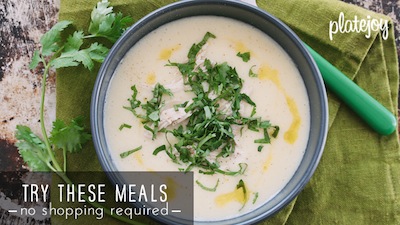Happy Semi-Hump Day (just two more afternoons to go until the weekend) and a special thank you to those readers who wrote in their votes for this morning’s post. The winner, of course, was the perfectly poached Eggs Benedict that Mom whipped up during Stanford’s bowl game on New Year’s Eve.
The origin of this dish is still a mystery. Multiple people and places have been accredited for its creation, from a special order by a hungry (and demanding) patron at the Waldorf Hotel circa 1894, to a traditional French cuisine named œufs bénédictine, consisting of a toasted piece of bread covered in a salt cod spread and, of course, a poached egg.
Wherever it came from, Eggs Benedict is a wonderful brunch dish, equal parts delicious and impressive, and Mom proudly asserts that it is devilishly simple to master – she used to make them, to order, for 40 plus people. Apparently, back in the day, my parents liked to party, with food, and lots of it. Now I know that I’m definitely their daughter.
While I was never in doubt of my Mom’s cooking skills, I couldn’t imagine poaching 40 plus perfect eggs to order without having a nervous breakdown or owning my own chicken coup. Her trick, I discovered, was to use a little help from our good friend Calphalon. With a unison pan poacher you get 6 fluffy eggs, all at the same time, with no overdone or broken yolks. If you love hosting breakfast and brunch parties, this tool will make your turn as top chef infinitely easier. And the eggs will taste just as they should. The only downside, they kind of look like marshmallows (see picture above), but in my book, looking like candy is never a bad thing. Kind of whimsical, really.
But if you want to poach the old fashioned way, I recommend following Madame Alice Water’s explanation of egg poaching at its finest from her book, The Art of Simple Food. Ms. Water’s says to use a low-sided saucepan and fill it with hot water 2-3 inches deep, add a splash of vinegar, and heat over a medium flame. The most important trick she imparts is to have your water heated but still, with no bubbles breaking the surface. Then, the big moment: gently break an egg into a cup and then, when water is ready, slide the egg into the water. After a minute, gently stir the water to create a vortex, keeping the egg from sticking to the side of the pan. On average, Alice says, a single, large egg will take 3 minutes to cook and 5 minutes for a firmer yolk. You can test doneness by lifting the egg with a spoon and pressing it with your finger. When all is a go, remove the egg, with your spider skimmer of course, and let it dry on a towel.
I have yet to attempt the art of true poaching, but I can tell you that I have tried this recipe for Eggs Benedict in its full glory. So whether you use your unison pan or the old-school technique and a lot of patience, this dish will be a real crowd pleaser. Get cracking and chow on.
Ingredients:
- 6 slices of toasted No Salt Bread (10 mg of sodium per slice)
- 6 eggs (70 mg of sodium per egg)
- 1/2 cup unsalted butter
- 1 cup of water
- 1 ½ tablespoons of lemon juice
- 3 egg yolks
- 1/4 teaspoon of cayenne pepper
Directions:
1. Start by poaching your eggs (see technique above) and while you make your sauce, keep them in a bowl of slightly warm water. Just remember to dry them before placing on toast in final step.
2. To begin the hollandaise, slowly melt the butter and keep warm over low heat.
3. Heat the lemon juice until just warmed.
4. Prepare a double broiler by heating a pot of hot water and placing another pot, or bowl, on top of it. Make sure it is secure.
5. Prepare a separate small saucepan with boiling water and have a measuring tablespoon ready.
6. Place egg yolks in the top of the double boiler and whisk until they begin to thicken.
7. Add 1 tablespoon of the boiling water (remember the one we had in a separate sauce pan?) and continue to beat the sauce until it thickens. Repeat, one tablespoon at a time, until you have added in 4 tablespoons of boiling water. Beat the mixture after each addition.
8. Add the warmed lemon juice and remove the double boiler from the heat.
9. Beat the sauce briskly with a wire whisk as you slowly pour in the melted butter. Add the cayenne and beat the sauce until it is thick.
10. Cut small rounds from the no salt, toasted bread, to mimic the shape of an English muffin, place poached egg on top and slather on the Hollandaise. Garnish with diced red and green onion and dig in.









Dear Sodium Girl,
I love the photos on your blog. So colorful and gives me an idea of what to expect. I have a question for you about pickling. A beloved friend gave me some no-sodium pickled carrots which I have been loving. I was wondering if I can re-use the brine for making pickled fennel root or green beans or cucumbers. What do you think? Thanks from a devoted reader.